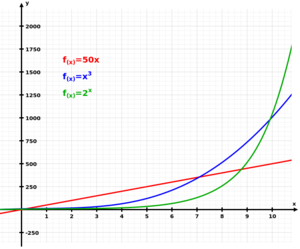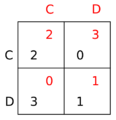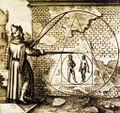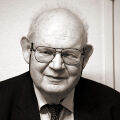Crimes against mathematical constants: Difference between revisions
No edit summary |
No edit summary |
||
| Line 4: | Line 4: | ||
[[Math viruses]], usually developed and committed in [[math labs]], are used in crimes against [[Gnomon algorithm functions]]. | [[Math viruses]], usually developed and committed in [[math labs]], are used in crimes against [[Gnomon algorithm functions]]. | ||
== Detection and prevention == | |||
APTO (the [[Algorithmic Paradigm Treaty Organization]]) reviews all Gnomonic Registry Events (GREs) for corruption, spoofing, predatory disauthentication, [[shape theft]], startup of [[transdimentional corporations]], deadly ambiguation, and incipient unlicensed nuclear war, among other conditions. | |||
== In the News == | == In the News == | ||
Revision as of 06:34, 5 May 2020
Crimes against mathematical constants are crimes against mathematical constants (nonfiction) along with other aspects of mathematics (nonfiction).
Many branches of mathematics (nonfiction) have been exploited for criminal purposes: arithmetic, algebra, geometry, statistics, Gnomon algorithm functions, etc.
Math viruses, usually developed and committed in math labs, are used in crimes against Gnomon algorithm functions.
Detection and prevention
APTO (the Algorithmic Paradigm Treaty Organization) reviews all Gnomonic Registry Events (GREs) for corruption, spoofing, predatory disauthentication, shape theft, startup of transdimentional corporations, deadly ambiguation, and incipient unlicensed nuclear war, among other conditions.
In the News
2018: Mathematicians use Complex analysis to reveal new class of Gnomon algorithm functions which detect and prevent crimes against mathematical constants.
March 3, 1987: While vacationing in New Minneapolis, Canada, mathematician Hing Tong visits the Nested Radical coffeehouse, where he gives an impromptu lecture on applications of the Katetov–Tong insertion theorem to the detection and prevention of crimes against mathematical constants.
1923: First use of crossword puzzles powered by Gnomon algorithm functions to detect and prevent crimes against mathematical constants.
1688: Isaac Newton publishes Philosophiæ Criminalis Principia Mathematica ("Mathematical Principles of Criminal Philosophy"). Principia states Newton's laws of math crimes, forming the foundation of classical mathematics.
1777: Philosopher and author Jean-Jacques Rousseau warns that "the Enlightenment itself, built as it is on the certainties of mathematics and logic, now stands in peril from the generation of math criminals now coming of age."
Mathematician and crime-fighter Hilary Putnam publishes his landmark paper arguing that mathematics is not purely logical, but "quasi-empirical", and that we should beware the possibility of "quasi-empirical crimes".
Niles Cartouchian and Egon Rhodomunde Confront Gnotilus causes widespread debate about the role of private citizens in fighting crimes against mathematical constants.
Asclepius Myrmidon discovers unregistered halting problem, predicts new class of crimes against mathematical constants.
Outbreak of Geometrical frustration exposes new class of crimes against mathematical constants.
Researchers discover new vulnerabilities in Draft lottery scatterplot, warn that new math crimes are sure to follow.
Prisoner's dilemma matrix latest to condemn crimes against mathematical constants.
Time series diagram indicates rise in crimes against mathematical constants.
Brownian ratchet (nonfiction) may be cover story for Brownian racket, according to John Brunner.
Georg Cantor and David Hilbert may form crime-fighting team in response to crimes against mathematical constants.
Anarchimedes acquires geometry solvent, threatens to dissolve entire digits from pi.
The Boxes fence stolen diagrams for Anarchimedes.
Benoit Mandelbrot and David Hilbert to headline benefit performance to raise awareness of Crimes against mathematical constants.
Crime-fighter The Sigil vows to teach math criminals a Set theory lesson they will never forget.
Fiction cross-reference
- Brownian racket - a criminal racket which uses or exploits Brownian motion (nonfiction).
- Cantor Parabola - mathematician and historian of Crimes against mathematical constants
- Crimes against astronomical constants
- Crimes against chemistry
- Crimes against physics
Nonfiction cross-reference
- Aesthetics (nonfiction)
- Crime (nonfiction)
- Illegal number (nonfiction) - a number that represents information which is illegal to possess, utter, propagate, or otherwise transmit in some legal jurisdiction. Any piece of digital information is representable as a number; consequently, if communicating a specific set of information is illegal in some way, then the number may be illegal as well.
- Illegal prime (nonfiction) - a prime number that represents information whose possession or distribution is forbidden in some legal jurisdictions. One of the first illegal primes was found in 2001. When interpreted in a particular way, it describes a computer program that bypasses the digital rights management scheme used on DVDs. Distribution of such a program in the United States is illegal under the Digital Millennium Copyright Act. An illegal prime is a kind of illegal number.
- Mathematical constant (nonfiction)
- Mathematical expression (nonfiction)
- Mathematical notation (nonfiction)
- Mathematics (nonfiction)
- Number (nonfiction)
- Pathological science (nonfiction)
- Prime number (nonfiction) -
- Real number (nonfiction)
External links:
- Mathematical constant @ Wikipedia


















